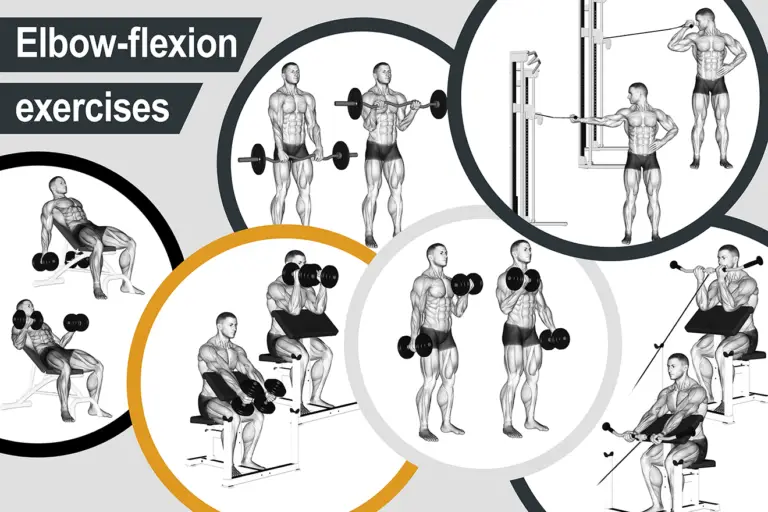Hip-flexion and hip-and-waist-flexion exercises
Movement patterns and classification
Hip-flexion exercises (for example, Figure 1) come in a variety of forms but are characterized by, of course, flexion of the hip. As only one joint is involved, hip-flexion exercises are classified as isolation.
Figure 1. Examples of hip-flexion exercises. A. hanging leg raise; B. Captain’s chair straight leg raise; C. lying alternating straight leg raise; D. seated leg raise; E. seated sit-up; F. suspended pike.
As their name implies, hip-and-waist-flexion exercises (for example, Figure 2) are the same as hip-flexion exercises except they include waist flexion. As two joints are involved (your hip and waist), hip-and-waist-flexion exercises are classified as compound.
Figure 2. Examples of hip-and-waist-flexion exercises. A. weighted captain’s chair leg and hip raise; B. jackknife sit-up; C. decline sit-up; D. v-up; E. lying leg and hip raise; F. suspended jackknife pike.
Muscle activation
Hip-flexion exercises target your iliopsoas and synergistically activate your tensor fasciae latae, pectineus, sartorius, adductor longus, adductor brevis, and rectus femoris (Figure 3). Your rectus abdominis and internal and external obliques act as important stabilizers.
Hip-and-waist-flexion exercises activate the exact same muscles as hip-flexion exercises do except that the rectus abdominis becomes the target muscle and the internal and external obliques act as synergists instead of stabilizers.
Figure 3. Main muscles activated by hip-flexion and hip-and-waist-flexion exercises. *The target in hip-and-waist-flexion exercises but a stabilizer in hip-flexion exercises. †A synergist in hip-and-waist-flexion exercises but a stabilizer in hip-flexion exercises. ‡The target in hip-flexion exercises but a synergist in hip-and-waist-flexion exercises.










